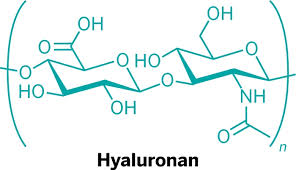
The hyaluronic acid concentration is fairly uniform across various HA type fillers, about 20mg per milliliter. The length and concentration of polymers differs significantly. Restylane, for instance, contains about 100,000 polymers per milliliter and can be injected through a relatively small bore needle. It is injected at the depth of the mid dermis. It can also be used for the treatment of deep wrinkles like the nasolabial and labiomental folds or the so called nasojugal fold at the transition between eyelid and cheek. Another variant of Restylane contains about 200,000 polymers per milliliter but of shorter length rendering the gel more liquid and permitting injections with an ultra small needle into more superficial wrinkles. At the opposite end of the spectrum of HA type fillers are products like Perlane with about 8000 polymers per milliliter. It is used for very deep folds or on top of the facial bones, but not close to the skin surface.
So different HA type fillers are intended for various levels of tissue depths and types of external soft tissue contours. Also different concentrations of HA theoretically affects how quickly or slowly the filler effects last. Thus what we now have in HA-based injectable fillers is a broad family of products that are both site and indication specific. When you then factor in the various manufacturers and their marketing and branding efforts, it can be very confusing to separate what if any real differences they are in the available HA injectable products.
With global awareness so easy with the internet, there are many HA injectable products that are not available in the U.S.. Many of these can be seen to be at less cost than here in the U.S. And some HA products are even available to be purchased online and shipped into the U.S. (illegal though that may be) But it is probably not wise to assume that because it is an HA composed filler than it is safe or even the same as a well known brand name used in the U.S.. Knock offs are common for every product in the world and injectable fillers are no exception.
Dr. Barry Eppley
Indianapolis, Indiana


